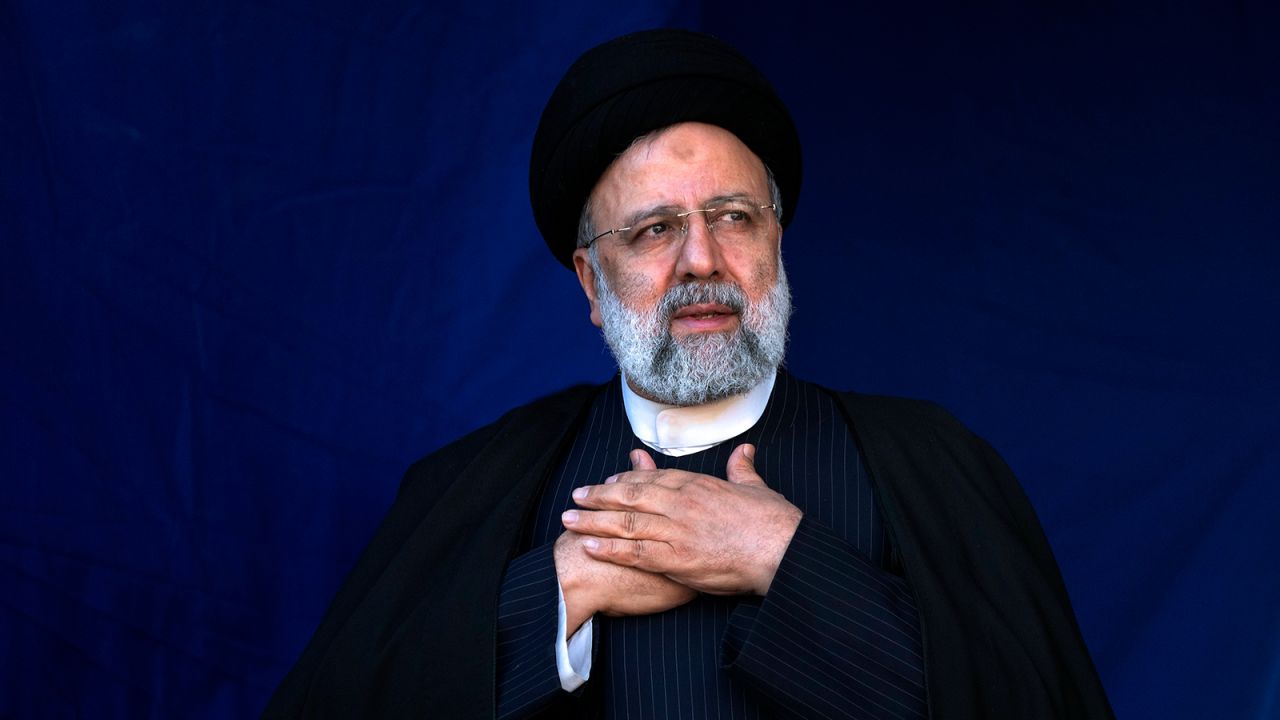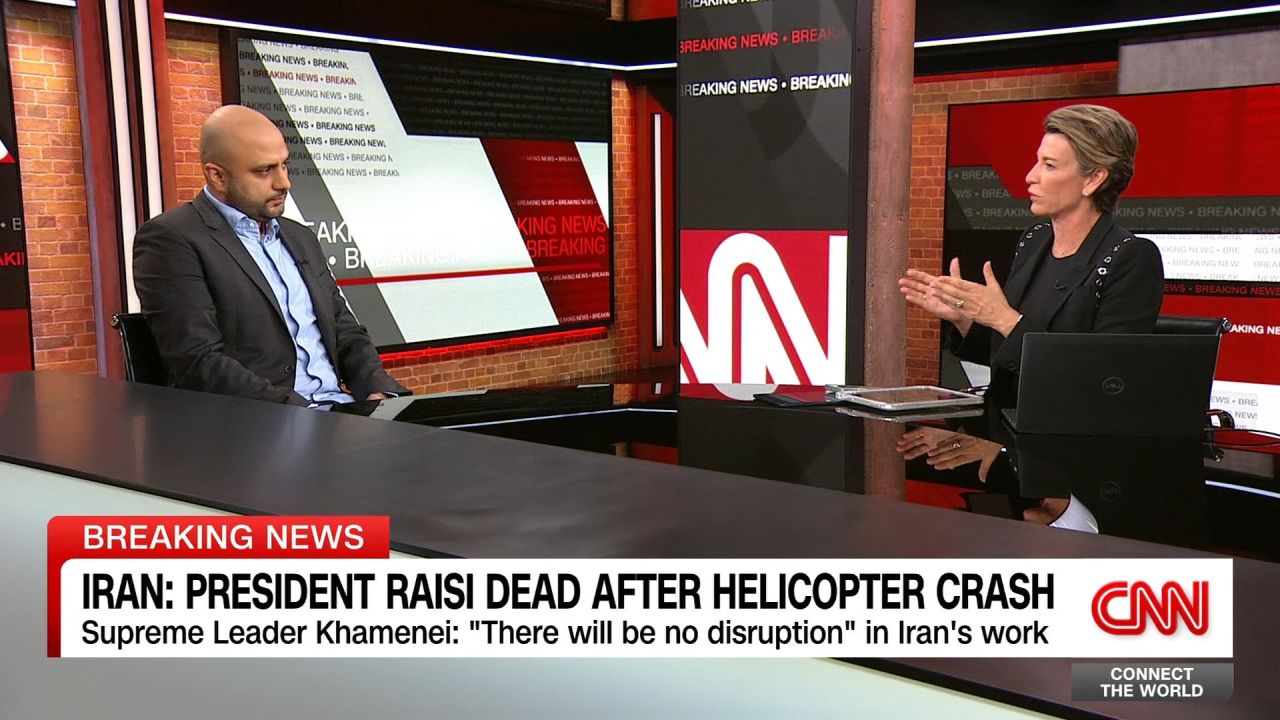Editor’s Note: A version of this story appears in CNN’s Meanwhile in the Middle East newsletter, a three-times-a-week look inside the region’s biggest stories. Sign up here.

CNN —
Once seen as a likely successor to Iran’s Supreme Leader, President Ebrahim Raisi has died in office, leaving the Islamic Republic’s hardline establishment facing an uncertain future.
An ultraconservative president, 63-year-old Raisi was killed Sunday, along with Foreign Minister Hossein Amir-Abdollahian and other high-ranking officials, in a helicopter crash in Iran’s remote northwest. Their death comes at a delicate time for a country that faces unprecedented challenges at home and from abroad.
The Islamic Republic’s economy remains crippled by American sanctions, its young population is becoming growingly restive, and the country faces increasingly belligerent adversaries in the Middle East and beyond.
Raisi’s death will “trigger elections at a time when the IRI (Islamic Republic of Iran) is at the nadir of its legitimacy and zenith of its exclusionary policies,” Ali Vaez, Iran Project Director at the International Crisis Group think tank, said on X.

Here’s what comes next.
Power has now been transferred to Mohammad Mokhber, who had served as Raisi’s vice president and was on Monday approved as acting president by Supreme Leader Ayatollah Ali Khamenei, the final arbiter of domestic and foreign affairs in the Islamic Republic.
Not as well known as Raisi, Mokhber is “another administrator,” Sanam Vakil, director of the Middle East and North Africa program at the Chatham House think tank in London, told CNN’s Becky Anderson. “He is close to the IRGC, close to the levers of power,” Vakil said, adding that he is likely to present a model of “business as usual” in the coming days.
But the country must, by law, hold elections within the next 50 days. On Monday, Iranian state news IRNA said Iran’s presidential elections will take place Friday, June 28. Candidates can register from May 30 to June 3, and campaigning will run from June 12 until the morning of June 27, it added.

Experts say that the elections are likely to be hastily organized, with poor voter participation. In March, Iran recorded its lowest electoral turnout since the Islamic Republic’s founding in 1979, despite government efforts to rally voters ahead of the ballot.
That vote — for seats in the parliament, or Majles, and the 88-member Assembly of Experts, which is tasked with picking the Supreme Leader — brought in mostly hardline politicians.
“The population has by and large lost faith in the idea that change can come through the ballot box,” Trita Parsi, co-founder and Executive Vice President of the Quincy Institute for Responsible Statecraft in Washington, DC, wrote Sunday on X.
The March election also barred more moderate politicians from running — including former President Hassan Rouhani, once a regime stalwart — tightening the small circle of hardliners to continue the Supreme Leader’s conservative rule after he dies.

“Real alternatives to Iran’s hardliners have simply not been allowed to stand for office in the last few elections,” Parsi said on X, adding that “those alternatives have in the eyes of the majority of the population lost credibility anyways, due to the failure to deliver change.”
Until the Supreme Leader is replaced, however, little change is expected to follow Raisi’s death, particularly on foreign policy.
“It is really the Supreme Leader and the Revolutionary Guards who make the final decisions, and even in the region mostly implement Iran’s regional policy,” Vaez said, adding that “overall we will see more continuity than change.”





























































